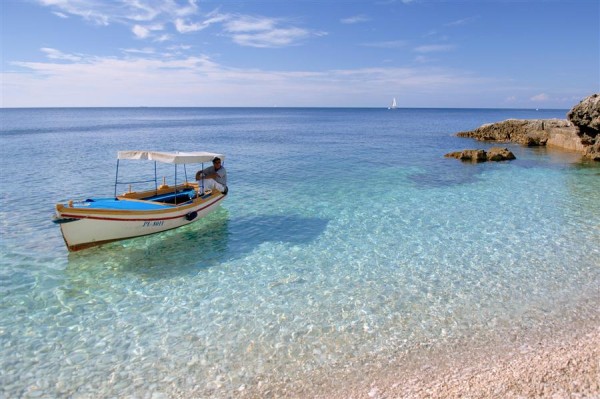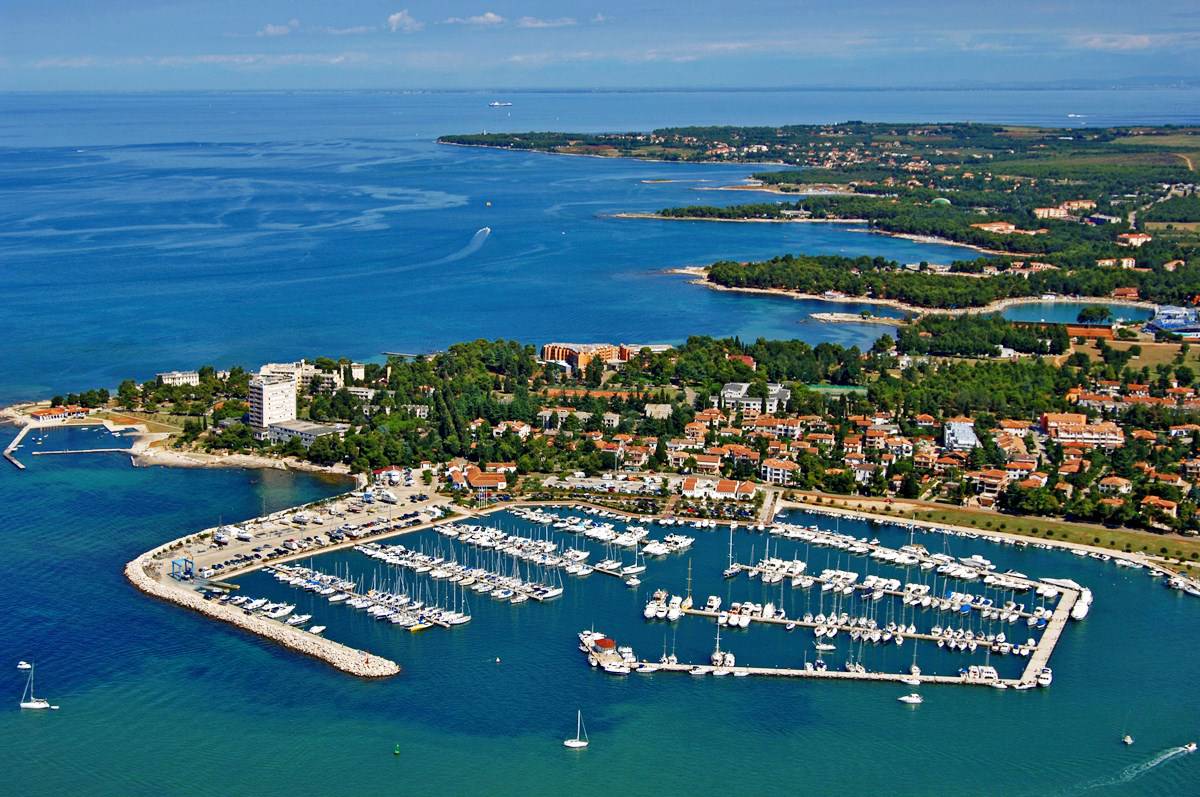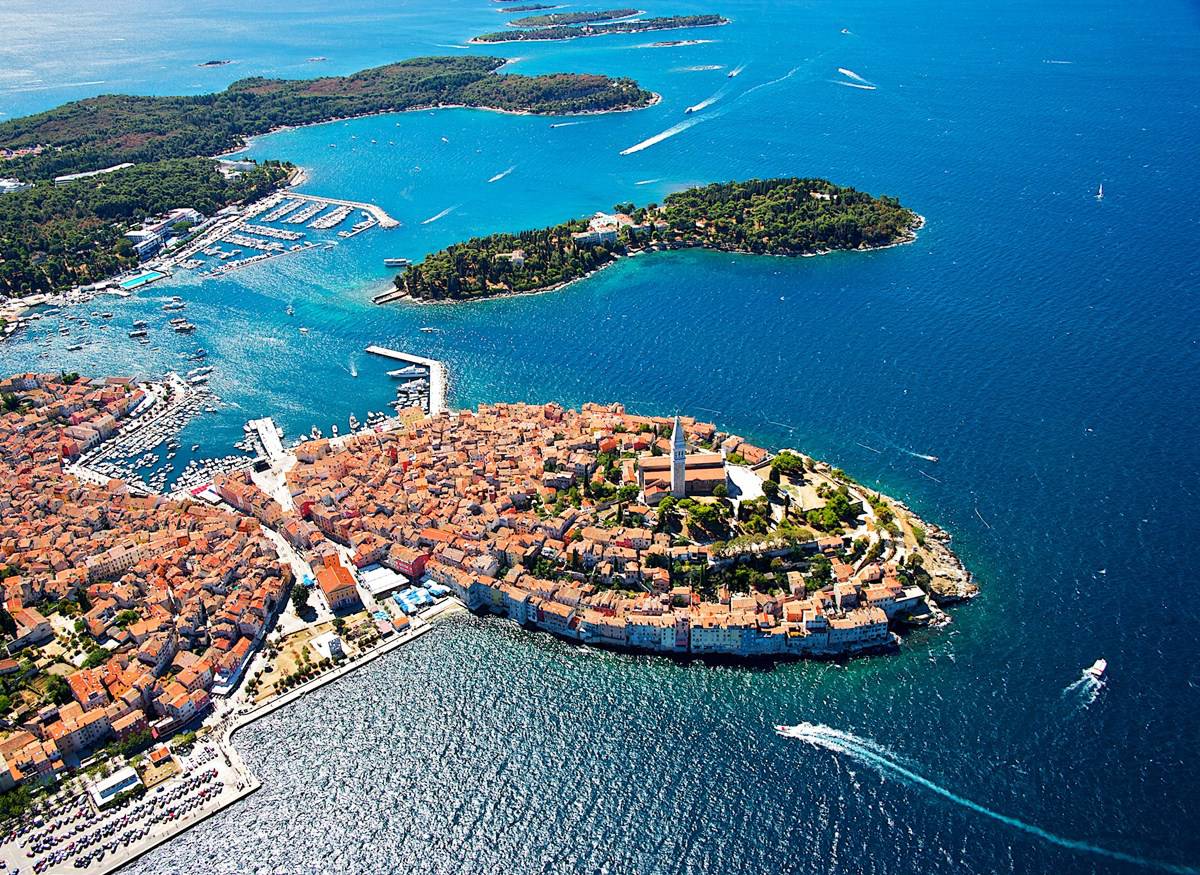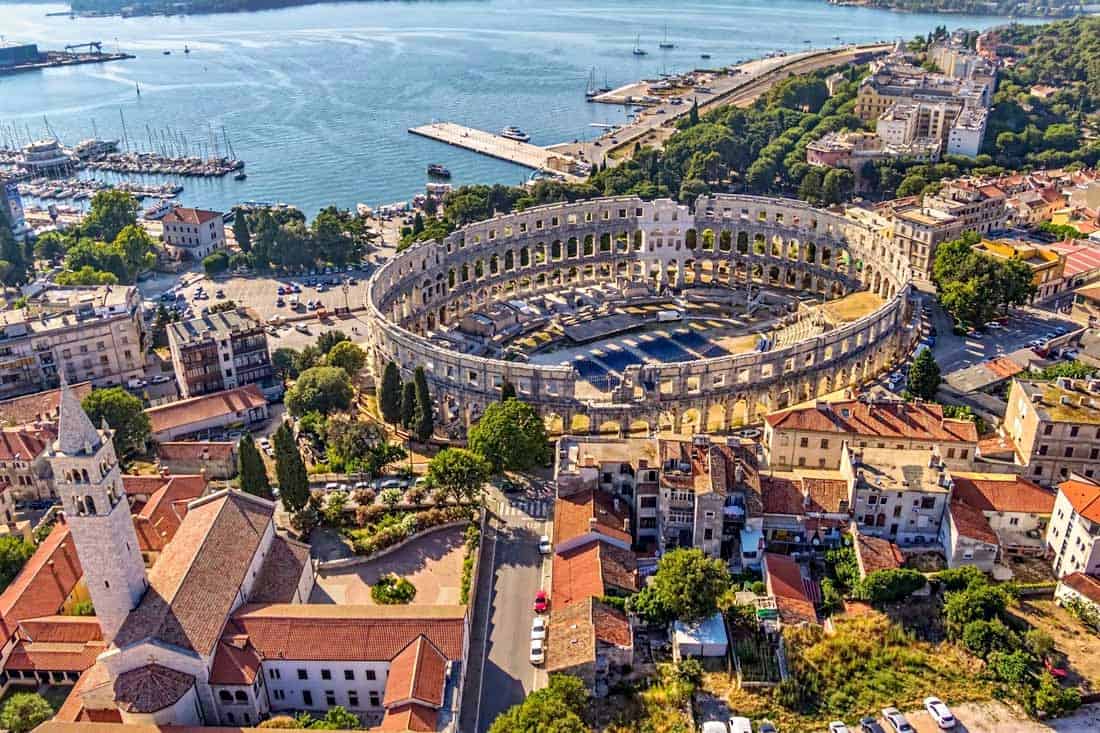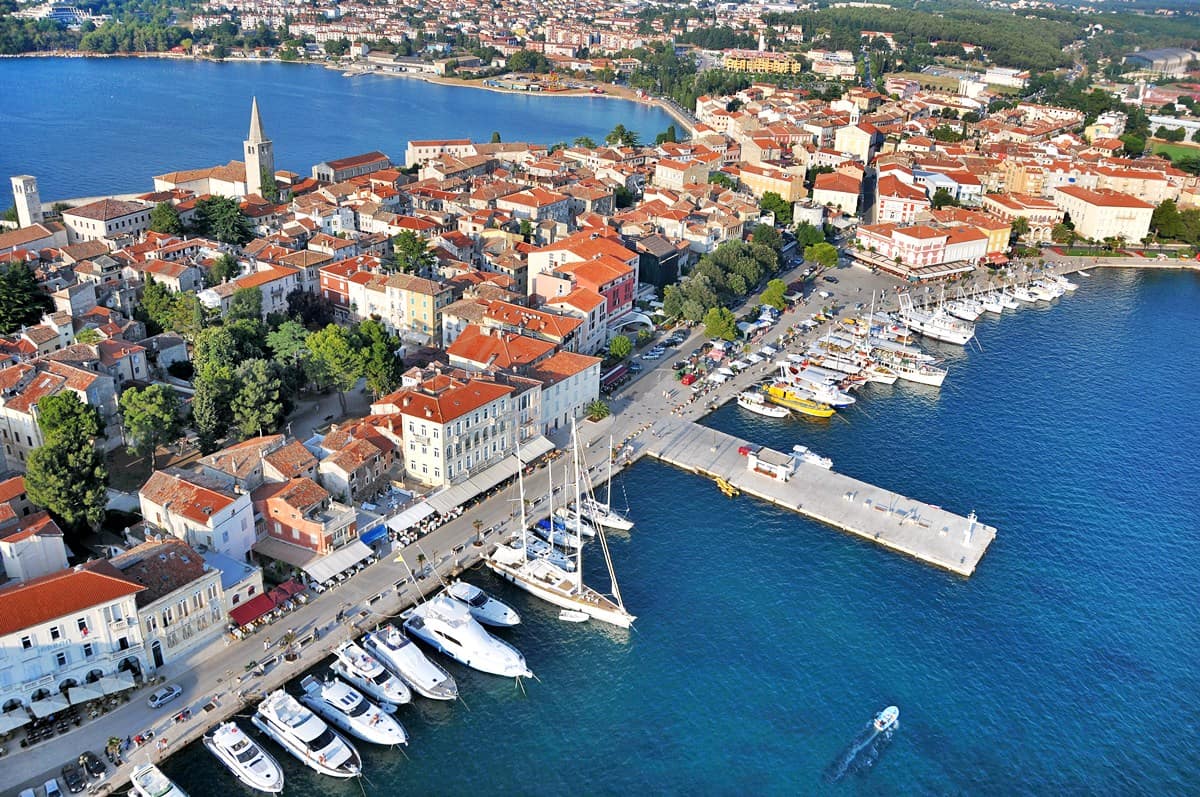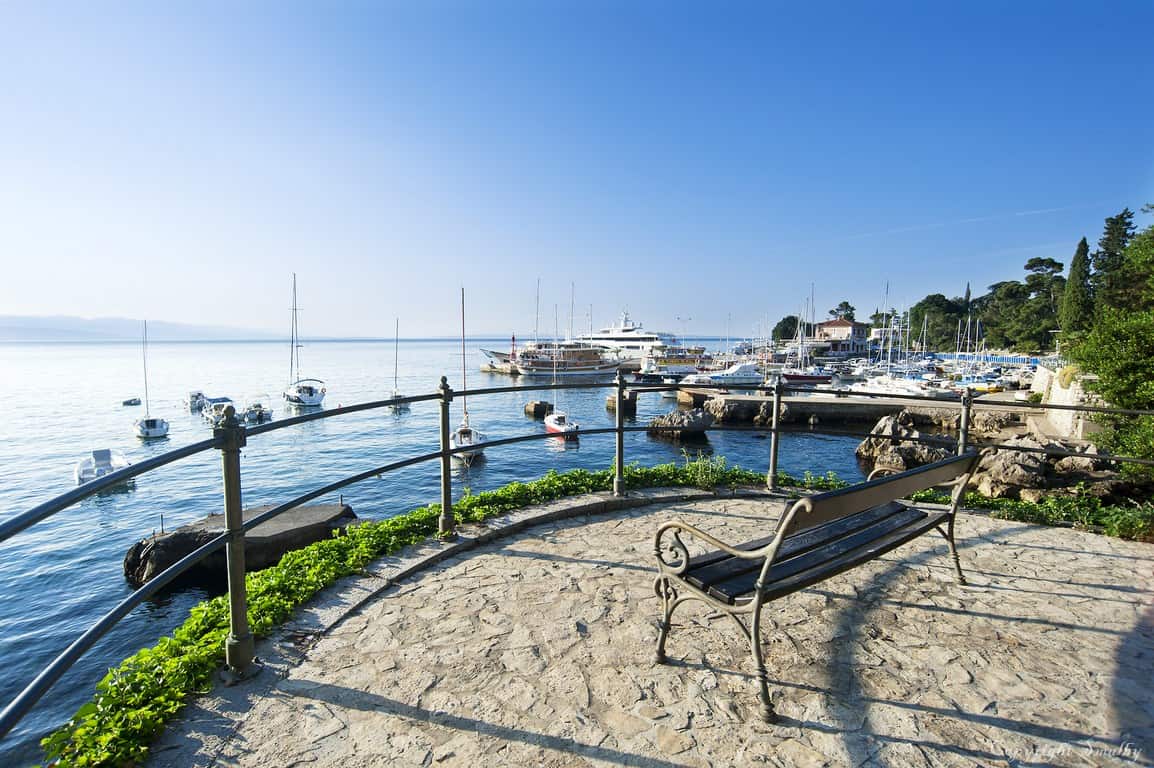Continental Croatia meets the Adriatic in Istria (Istra to Croats), the heart-shaped, 3600-sq-km peninsula just south of Trieste in Italy. The bucolic interior of rolling hills and fertile plains attracts artsy visitors to Istria’s hilltop villages, rural hotels and farmhouse restaurants, while the verdant indented coastline is enormously popular with the sun-and-sea set. While vast hotel complexes line much of the coast and the rocky beaches are not Croatia’s best, facilities are wide ranging, the sea is clean and secluded spots are still plentiful.
The coast, or ‘Blue Istria’, as the tourist board calls it, gets flooded with tourists in summer, but you can still feel alone and undisturbed in ‘Green Istria’ (the interior), even in mid-August. Add acclaimed gastronomy (starring fresh seafood, prime white truffles, wild asparagus, top-rated olive oils and award-winning wines), sprinkle it with historical charm and you have a little slice of heaven.
Umag / Umago (Italian)
Umag tradition dates back to ancient country villa, who were the originators of today’s wellness Tourism. Play sports, recreation, active rest, recharged the batteries: This provides you with all the Umag-Umago with its combination of old-town streets and squares, but also numerous paths for leisurely afternoon bike rides, horseback riding and walks. The landscape of the North-Western Istria, shaped through two thousand years of commitment and of being in love in the Red Istrian soil, will not leave you indifferent. Enjoy the beauty of nature, tranquility, silence, which is energizing. And when you come back in Umag-Umago, you have at your disposal a hundred tennis courts and a beautiful Tennis Stadium in Stella Maris.
Rovinj / Rovigno (Italian)
Rovinj (Rovigno in Italian) is coastal Istria’s star attraction. While it can get overrun with tourists in summer, and residents have developed a sharp eye for maximising profits by upgrading hotels and restaurants to four-star status, it remains one of the last true Mediterranean fishing ports. Fishers haul their catch into the harbour in the early morning, followed by a horde of squawking gulls, and mend their nets before lunch. Prayers for a good catch are sent forth at the massive Church of St Euphemia, the 60m-high tower of which punctuates the peninsula. Wooded hills and low-rise hotels surround the old town, which is webbed with steep cobbled streets and piazzas. The 14 green islands of the Rovinj archipelago make for a pleasant afternoon away; the most popular islands are Sveta Katarina and Crveni Otok (Red Island), also known as Sveti Andrija.
The old town is contained within an egg-shaped peninsula. About 1.5km south is the Punta Corrente Forest Park and the wooded cape of Zlatni Rt (Golden Cape), with its age-old oak and pine trees and several large hotels. There are two harbours: the northern open harbour and the small, protected harbour to the south.
Pula / Pola (Italian)
The wealth of Roman architecture makes otherwise workaday Pula (ancient Polensium) a standout among Croatia’s larger cities. The star of the show is the remarkably well-preserved Roman amphitheatre, smack in the heart of the city, which dominates the streetscape and doubles as a venue for summer concerts and festivals.
Historical attractions aside, Pula is a busy commercial city on the sea that has managed to retain a friendly small-town appeal. Just a short bus ride away, a series of beaches awaits at the resorts that occupy the Verudela Peninsula to the south. Although marred with residential and holiday developments, the coast is dotted with fragrant pine groves, seaside cafes and a clutch of good restaurants. Further south along the indented shoreline, the Premantura Peninsula hides a spectacular nature park, the protected cape of Kamenjak.
Porec/ Parenzo (Italian)
If you are looking for the activity, the more unusual experiences and rich cultural heritage, the arrival in Porec and its surroundings is the right choice because the folks have over centuries old experience in hospitality and superb tourist offer. You will not miss even the party that in the tourist resorts and in the town has almost every step of the way; beach clubs, coffee bars, and after midnight you can enjoy the pleasant night bars and discos. Simply-entertainment from sunset to sunrise.
Feel a touch of eternity!
Poreč, the former Roman colony, an outstanding example of the town developed in the Romanesque architecture with beautiful Venetian Gothic palaces near which the walk turns into a true experience, and its orthogonal street system is fully preserved until today! During the reign of the Byzantine Emperor Justijana, Poreč has reached its greatest splendor, in what will convince you the Euphrasius Basilica, a cultural monument that has left no one indifferent. Formed in the mid VI. century, in the time of Bishop Euphrasius Basilica, was built in the Byzantine style, and the mosaics which are painted façade and the Interior are among the most beautiful preserved works of Byzantine art in the world! The entire complex was included in the World Heritage list of UNESCO. By entering the Basilica, you will feel the spirit of past centuries and you’ll be able to touch the eternity!
Opatija
Genteel Opatija, 13km west of Rijeka, was the most fashionable seaside resort for the Viennese elite during the days of the Austro-Hungarian Empire – as evidenced by many beautiful belle époque villas that remain. Although it lost some of its lustre during the Yugoslav period, the town has spruced itself up and once again attracts a mainly mature crowd, drawn to its grand spa hotels, spectacular location and agreeable year-round climate. Some excellent restaurants have sprung up to cater to them, with a particularly good cluster in the pretty Volosko neighbourhood.
The town sprawls along the coast between forested hills and the sparkling Adriatic, and the whole waterfront is connected by a promenade. Don’t expect great beaches (there aren’t any) but there’s still excellent swimming in the sheltered bays.
 Balkan Incoming DMC Travel news, destinations and options in Balkan region
Balkan Incoming DMC Travel news, destinations and options in Balkan region
